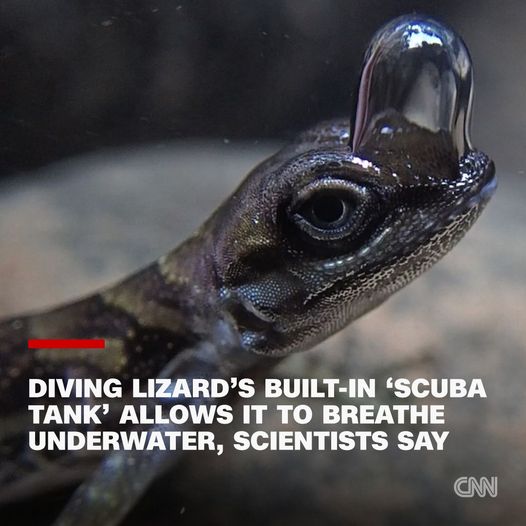In a Costa Rican rainforest, a small, semiaquatic lizard called a diving anole leaps into a stream.
Minutes pass, but the anole doesn’t surface for air, as these lizards typically do. Instead, the submerged lizard crouches on a river rock, a small air bubble atop its head expanding like a balloon and then shrinking. Like a scuba diver, the reptile is breathing a reservoir of stored oxygen.

Using this bubble helps anoles prolong their stay underwater, according to Dr. Lindsey Swierk, an assistant research professor of biological sciences at Binghamton University in New York. Footage that Swierk recently captured of submerged anoles shows prominent bubbles swelling and deflating on the reptiles’ heads. This technique could help anoles hide from predators on land, Swierk reported Tuesday in the journal Biology Letters.
Swierk has studied diving anoles for nearly a decade, teaming up in 2021 with other researchers to describe bubble-breathing behavior across multiple species of semiaquatic lizards in the Anolis genus.
“A lot of collaborations have emerged from some pretty basic questions — just a lot of us watching these videos, wondering how it happens, why it happens,” she told CNN.
For the new study, Swierk investigated the species Anolis aquaticus, which lives near forest streams in southwestern Costa Rica and western Panama. Swierk found that bubble formation directly affected how long an anole could stay submerged. During experiments, bubble-breathing anoles remained underwater for 3 ½ minutes on average. It was about 32% longer than anoles that were prevented — through the application of an emollient to parts of their heads — from forming air bubbles.
“They can lengthen their dives by using these breathing bubbles,” Swierk said.
Diving anoles aren’t fast runners and rely mostly on camouflage to hide from predators such as birds, snakes, mammals and other lizards. And when camouflage fails, waiting out a threat underwater is an effective survival strategy, Swierk said.
‘A fascinating behavior’
Trapping air in bubbles to breathe in water is practiced by some types of insects and arachnids, such as water beetles and diving bell spiders. So far, anoles are the only animals with backbones that are known to breathe using bubbles.
“This is such a fascinating behavior in lizards,” said Dr. Earyn McGee, a herpetologist specializing in lizards and coordinator of conservation engagement at the Los Angeles Zoo. “This kind of research will add to our understanding of how these lizards and potentially other animals evolved their underwater breathing techniques.”
